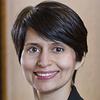AI Systems and Drafting Patents: Enablement and Inventorship
Overcoming Patent Eligibility, Inventorship, and Enablement Challenges and Avoiding Rejections
Recording of a 90-minute premium CLE video webinar with Q&A
This CLE course will guide patent practitioners on overcoming the challenges, including patent eligibility and enablement, when seeking patent protection for artificial intelligence (AI) systems. The panel will also discuss what can be done to anticipate and minimize the risks of Section 101 or Section 112 rejections.
Outline
- Challenges in drafting patents for AI systems under Sections 101 and 112
- What patent counsel can do to overcome those challenges
- Anticipating and avoiding Section 101 or Section 112 rejections
Benefits
The panel will review these and other key issues:
- What hurdles must patent counsel overcome to demonstrate inventorship with AI systems?
- How can patent counsel meet the requirements under Sections 101 and 112 in AI systems patent applications?
- What steps should patent counsel take to minimize the likelihood of Section 101 or Section 112 rejections?
Faculty

Dina Blikshteyn
Counsel
Haynes and Boone
Ms. Blikshteyn is a Co-Chair of the firm’s Artificial Intelligence Practice. Her practice is focused on post... | Read More
Ms. Blikshteyn is a Co-Chair of the firm’s Artificial Intelligence Practice. Her practice is focused on post grant proceedings before the U.S. Patent and Trademark Office, preparing and prosecuting domestic and international patent applications, as well as handling trademark and other IP disciplines. Ms. Blikshteyn focuses her patent practice on technology areas. Illustrative areas include artificial intelligence and machine learning, cloud computing, cyber security, web applications, map and navigation applications, point-of-sale systems, computer graphics, data structures, algorithms, distributed systems, client-server applications, CPU/GPU processor design, operating systems, mobile technologies, databases, database optimization, multimedia and video streaming, financial trading products, banking software, computerized auction software, healthcare systems, Internet systems, advertising software, wireless communication systems and applications, telecommunications systems, marketing applications, industrial control systems (ICS), cable systems, and smart grid and micro grid technologies.
Close
Carl A. Kukkonen, III
Partner
Jones Day
Mr. Kukkonen has more than 20 years of experience in strategic intellectual property counseling, technology... | Read More
Mr. Kukkonen has more than 20 years of experience in strategic intellectual property counseling, technology transactions, and litigation. Specifically, he advises clients on patent infringement and validity, preparation and prosecution of patent applications, prelitigation case assessment, active patent litigation, licensing and partnering agreements, IP due diligence, and brand protection matters. Mr. Kukkonen has prosecuted, analyzed, and litigated patents across various technologies including high-technology/software, medical devices, and energy technology. His experience in the high-tech arena includes database technologies, cybersecurity, artificial intelligence and machine learning, ridesharing/carpooling, robotics, enterprise software, cloud computing, big data, blockchains, mobile phone software and hardware, telecommunications, Internet of Things (IoT), semiconductors, nanotechnology, optical devices, computer and microchip architecture, virtual and augmented reality, and signal and image processing. In the area of medical devices Mr. Kukkonen has handled matters related to medication delivery devices, wireless health care, digital health, bedside patient monitors, breathing apparatus including respirators, incubators, infusion pumps, physiological sensors including cardiac monitors and blood pressure devices, ophthalmic technologies, and bone fixation plates and systems.
Close
Dr. Christian E. Mammen
Partner
Womble Bond Dickinson
Dr. Mammen has more than 20 years of experience guiding Silicon Valley and global tech and life sciences clients in... | Read More
Dr. Mammen has more than 20 years of experience guiding Silicon Valley and global tech and life sciences clients in high-stakes patent and intellectual property litigation. He has substantial lead counsel experience and has led both large and small trial teams. Dr. Mammen has also served as lead counsel on appeals before the Ninth and Federal Circuits. He is an accomplished scholar, with significant teaching and academic experience. Dr. Mammen’s clients include companies in the software, telecom, microelectronics and pharmaceutical/biotech/life sciences sectors.
Close